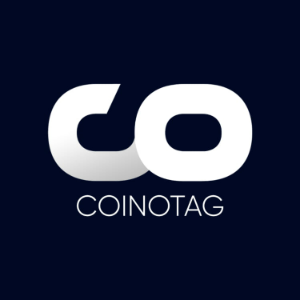SharpLink Gaming: Ethereum Strategy Brings Upside, But Dilution Clouds The Path
8 min read
Summary SharpLink Gaming recently purchased 176,271 ETH for $463 million, positioning itself as the largest corporate holder of Ethereum, and effectively pivoting into a crypto treasury strategy similar to MicroStrategy’s. SBET faces significant dilution risk, with over 70 million potentially dilutive securities against a float of just ~2.3 million shares, contributing to recent sharp declines in its stock price. Despite the dilution overhang, SBET trades at just 1.19× its ETH per-share value, far below peers like MSTR and Metaplanet, suggesting a relatively fair valuation to underlying crypto assets. With low float, high volatility, and significant overhang from registered PIPE shares and an active $1B ATM shelf, short-term risks are elevated, but ETH bulls may see long-term upside. The last year has been a transformational one for Wall Street crypto exposure. The spot Bitcoin ( BTC-USD ) ETFs launch in January last year was the inflection point, then the spot Ethereum ( ETH-USD) ETFs followed, then more recently the Circle ( CRCL ) IPO (which garnered much attention), and the regulatory clarity of stablecoins accelerated Wall Street’s embrace of crypto asset exposure the more. Now, even retail giants like Amazon ( AMZN ) and Walmart ( WMT ) are experimenting with their own stablecoin . On an institutional level of exposure to crypto, the treasury strategy based on a crypto asset has been made popular by Michael Saylor’s Strategy ( MSTR ). Today, you can count a dozen plus companies, in the U.S. and outside the U.S., adopting the crypto-backed treasury strategy. Bitcoin has been the default choice for companies seeking balance sheet exposure to crypto assets. Over 90% of companies pursuing a treasury allocation have Bitcoin as their anchor asset. Attention is, however, now turning to other “tried and tested” crypto assets lately. Ethereum, the second-largest crypto asset by market cap, is emerging as the next logical choice for companies’ crypto-linked treasury. SharpLink Gaming (NASDAQ: SBET ) is leaning into Ethereum the way MSTR did with Bitcoin. SharpLink is now the largest corporate holder of ETH, with 176,271 ETH purchased for $463 million recently. The company is allocating a portion of its balance sheet to ETH and aligning its product and partnership strategy with the broader Ethereum ecosystem. SharpLink Gaming – Company Overview Before we make sense of SharpLink’s present, we need an understanding of the company’s origins and evolution. SharpLink was Founded in 2019, and originally began as a digital sports media and performance marketing firm focused on connecting sports fans with sports betting and fantasy sports platforms. The company grew its footprint by powering real-time odds integrations and affiliate services across U.S. sports content networks. In 2021, SharpLink merged with the Israeli telecom billing software provider , Mer Telemanagement Solutions Ltd, listed then on Nasdaq with the ticker MTSL. The merger enabled SharpLink to inherit a public listing, and the ticker symbol of the merged company was changed to SBET. This provided SharpLink the strategic springboard into the U.S. public markets under the ticker SBET. Following the transition, SharpLink expanded into the iGaming infrastructure space, building B2B solutions aimed at enabling sportsbooks, teams, and media partners to embed betting functionality into digital experiences. Over the years, the company has navigated shifting regulatory tides in the U.S., adapted to media-tech convergence, and now in a bold pivot recently, SharpLink is focusing on Ethereum as both a balance sheet asset and strategic alignment framework. SharpLink initiated its purchase of Ethereum for corporate treasury lately with 176,271 ETH purchased for $463 million after the successful closing of a PIPE funding earlier this month. The funding was led by ConsenSys, one of the most important companies in the Ethereum ecosystem – this further cements SharpLink’s Ethereum-first strategy. The initiating purchase of such a substantial amount of ETH could present a new narrative and valuation framework for SharpLink, following months of downward pressure and investor uncertainty for the stock. Companies aggressively pursuing corporate strategy focused crypto assets have been enjoying outsized re-ratings and growing retail and institutional interest. Prime example is MSTR, trading at around 80% premium to its BTC net asset value despite posting ongoing net losses. Defi Development Corp., formerly Janover, ( DFDV ) adopted a Solana ( SOL-USD ) treasury strategy and has seen a re-rating as a result, triggering a parabolic surge; the stock is currently up about 500% since the SOL strategy pivot and up over 3,000% YTD. SBET has been underwater for long, before the pivot to ETH corporate treasury strategy recently. A 1-for-12 reverse stock split was effected for SBET last month to save the stock from losing compliance with Nasdaq’s $1 minimum bid price requirement as the stock has been trading under $1. That mechanical fix was important for SharpLink by preserving SBET Nasdaq listing just ahead of the pivot into the Ethereum treasury strategy. SBET’s Volatility: Risks Meet Crypto Assets Treasury Opportunity Crypto-tied stocks are no stranger to volatility, and SBET’s case is even more accentuated due to low float. SBET float has been highly compressed over the years. First, there was a 1-for-10 stock split in April 2023 in which SBET shares outstanding were consolidated from 26.9 million shares to 2.69 million shares. About 5 million more shares were issued over time after the 1-for-10 split (take note of the dilution). And as of the more recent 1-for-12 split in May 2025, shares were further consolidated from around 7.9 million shares to around 660,000 shares. After the 1-for-12 reverse stock split, there have been a series of fundraisings and share issuances. In the context of the PIPE offering earmarked for the purchase of treasury ETH mentioned earlier, $425 million was raised and ~69.1 million shares and related warrants were issued. Another $4.5 million public offering took place on May 20 in which 34,000 shares and 1.49 million pre-funded warrants were issued. Then an additional $79 million was raised between June 2 and June 12 under the $1 billion ATM shelf offering through the issuance of 1.6 million common shares. The shares of the PIPE offering were initially restricted from immediate trading due to registration rights agreements (until recently). Of the $4.5 million raised in the May public offering, only 34,000 shares were immediately tradable. And 1.6 million shares from the ATM raise were also immediately tradable. When we add that to the existing 660,000 shares outstanding as of the stock split, we get a current float of approximately 2.3 million shares. Now, summing up the total share and warrant count from the post reverse split capital raises – 69.1 million from the PIPE offering, 1.6 million via ATM, 34,000 shares plus 1.49 million pre-funded warrants from the May public offering, and ~660 thousand outstanding during the reverse split – over 70 million additional potentially dilutive securities have been added since. Considering the scale and overhang of the existing dilutive shares and a mere float of ~2.3 million shares, this ultra-low float relative to a large fully diluted share count is a recipe for wild volatility. And this further amplifies the downside risk when these potentially dilutive securities become eligible for trading or exercised, pressuring the stock with dilution. Seeking Alpha SBET saw a steep decline of over 70% last week despite the announcement of the 176,271 ETH purchase, which was an absolute divergence from the trend of treasury strategy announcements typically acting as short-term bullish catalysts for companies initiating crypto treasury purchases. The causes of the steep price dip were directly related to the dilution concerns I’ve discussed in detail in the preceding paragraphs. Investors developed anxiety surrounding the stock’s dilution after SharpLink filed an S-3 registration statement last week. Then that led to some sell-off which was further exacerbated due to the low float, making the price plunge dramatically. Basically, shares and pre-funded warrants from the PIPE placement in May were registered for resale in the S-3, lifting the registration rights restrictions on them. The “Sword of Damocles” effect kicked in, as investors rightly gauged the ~70 million shares supply overhang as a potential threat to share price stability, and the high potential for future dilution and selling pressure against the current low float. Josepg Lubin post (X) Consensys led the PIPE financing and was the largest investor in the PIPE . Joseph Lubin, the founder of Consensys and co-founder of Ethereum, released a statement on X allaying fears of potential immediate selloff by the PIPE investors. While that may seem an encouraging gesture, I don’t think it will fully allay investors’ fears of the effects of dilution as float remains this low. It will take a while before the market absorbs all that dilution and increases the float. As SBET fell below $10 last Friday from last week’s high of $37, I think investors should not rule out the possibility of it revisiting $1. Though I feel this is not likely, it should not be ruled out because of the convergence of risks, including a new-found crypto-link volatility for SBET given the company’s balance sheet is now heavily exposed to ETH, and also the potential for PIPE investors to exit positions now that their shares are registered, and the mechanical weight of more dilution being priced in. Let’s not also forget that of the $1 billion ATM shelf offering (mentioned earlier), only $79 million has been raised so far, leaving potential to raise an additional $921 million. SBET is shaping up to be a potential dilution machine. Beyond the dilution and low float overhang, a comp analysis of SBET’s crypto assets holdings shows that it is still reasonably valued based on its underlying crypto assets. I’ve included SBET into a table of companies I track (which comprises Bitcoin miners and companies pursuing a crypto asset treasury strategy) based on their crypto exposure on balance sheet and their price-to-hodl ratio (stock price against the per-share value of their crypto holdings). P/Hold comparison (Author) SBET is currently trading at 1.76x to its treasury holdings. As of last Friday’s dip when the stock tumbled to ~$9, it was trading at a much more attractive 1.19x P/Hodl. SBET has quickly re-rated off that lower valuation; this further shows the potential for volatility I’ve talked about so far. SharpLink also has a slight advantage over companies pursuing pure BTC strategy because of the ability to stake ETH. I’m labeling this advantage as a “slight” one because BTC’s demand and sheer institutional dominance remains over ETH and other assets. As of the latest filing, SharpLink disclosed that over 95% of its ETH holdings are currently deployed in staking services. At a current APY of around 4%, that’s ~6,695 ETH extra from staking rewards annually, and a potential $17.6 million addition to SharpLink’s balance sheet at current ETH prices. Takeaway SBET embodies both dilution risk and a slight valuation attractiveness to net asset value. There is potential downside for SBET because of dilution risk and low float (the bad), and also potential upside as its premium to underlying assets is still reasonable (the good), and also potentially “the ugly” if, for some reason, the stock falls near $1 again. As I’ve discussed, SBET faces near-term supply overhang and severe dilution risks (both from the registered PIPE shares and the unused capacity left in the ATM offering). Based on these factors, I’m initiating coverage with a Hold, with an open stance to watch how the stock absorbs the supply overhang in the coming weeks and months. However, If you’re an ETH maxi and comfortable with what I’d call leveraged ETH exposure through a volatile equity, taking some position could be worth it in the long term, if ETH keeps momentum and the company navigates its share count headwinds well.

Source: Seeking Alpha



